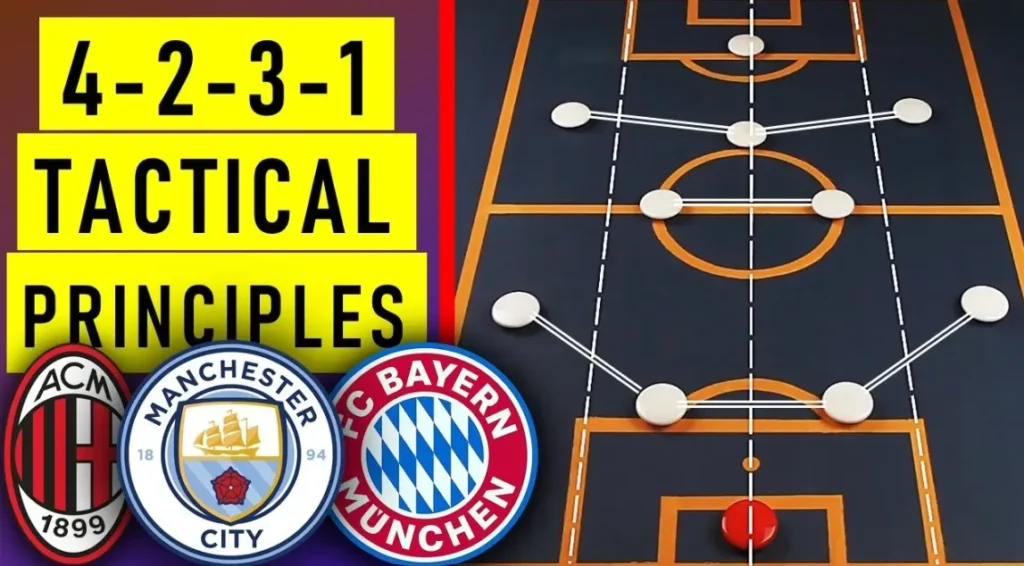Football, the beautiful game, has witnessed numerous tactical evolutions over its illustrious history. Among these, innovative formations have often defined eras, shaped team identities, and influenced the game’s dynamics on a global scale. Whether it’s the artistry of the Total Football era or the pragmatic revolution of the back three, football formations have left an indelible mark on the sport. For fans eager to watch the game’s evolving tactics live, Socolive TV offers an excellent platform to catch the action in real-time.
The Evolution of Football Formations
In the early days, football was a chaotic affair with rudimentary structures. Teams played with formations such as the 2-3-5, prioritizing attack over defense. Over time, coaches and tacticians began to recognize the importance of balance, leading to a gradual evolution in formations to better manage transitions and control games.
The Pyramid Formation (2-3-5)
One of the first truly structured formations, the 2-3-5, known as the “Pyramid,” emerged in the late 19th century. It provided a balance between attack and defense and became the standard during football’s formative years. The Pyramid emphasized wingers and creative inside forwards, fostering an attacking spectacle. It remained dominant until the mid-20th century when tactical priorities shifted.
The WM Formation (3-2-2-3)
Arsenal manager Herbert Chapman introduced the WM formation in the 1920s and 1930s, revolutionizing football strategy. By splitting the midfield into defensive and attacking units, the WM provided greater defensive solidity while maintaining offensive prowess. This formation laid the groundwork for modern tactical thinking and counterattacking strategies.
Catenaccio (4-4-2 with a Libero)
Catenaccio, Italian for “door-bolt,” is synonymous with defensive discipline and organization. Popularized by Helenio Herrera’s Inter Milan in the 1960s, it used a libero or sweeper behind the defensive line. The system emphasized compactness, counterattacking, and a results-oriented approach. While criticized for being overly defensive, Catenaccio brought immense success, influencing defensive tactics worldwide.
Total Football (4-3-3)
The Dutch concept of “Total Football,” spearheaded by Ajax and the Netherlands national team in the 1970s, emphasized fluidity and versatility. Players interchanged positions seamlessly, and the 4-3-3 formation facilitated this dynamic style. Johan Cruyff, a central figure in Total Football, described it as a philosophy where “everyone attacks and everyone defends.” This tactical revolution reshaped modern football, inspiring countless coaches and players.
The 4-4-2 Revolution
The 4-4-2 formation gained prominence in the 1980s and 1990s due to its balance and adaptability. With two banks of four and a striking partnership, it offered defensive solidity and attacking options. Managers like Sir Alex Ferguson at Manchester United used this formation to great effect, dominating English and European football during the era.

The Back Three and Wing-Backs (3-5-2)
The resurgence of the back three with wing-backs became a hallmark of the 1990s and beyond. Managers like Antonio Conte and Louis van Gaal exploited the width provided by wing-backs while maintaining defensive depth. The 3-5-2 offered a hybrid approach, blending attacking flair with defensive structure, and remains a favorite for tacticians seeking flexibility.
The False Nine (4-6-0)
Pep Guardiola’s Barcelona team in the late 2000s introduced the world to the “False Nine” concept, epitomized by Lionel Messi. Operating without a traditional striker, the 4-6-0 formation allowed fluid movement, positional interchange, and overwhelming possession. This approach dismantled rigid defensive structures and showcased the tactical possibilities of modern football.

Gegenpressing and the 4-2-3-1
Jürgen Klopp’s gegenpressing philosophy, combined with the 4-2-3-1 formation, transformed football in the 2010s. Teams pressed high, forcing turnovers in dangerous areas. The 4-2-3-1 provided defensive stability through the double pivot while allowing creativity and fluidity in attack. Klopp’s Liverpool and Borussia Dortmund sides epitomized the effectiveness of this system.
Modern Innovations and Hybrid Formations
In the current era, hybrid formations and positional play dominate tactical discourse. Managers like Pep Guardiola, Thomas Tuchel, and Roberto De Zerbi continuously tweak formations mid-game to exploit weaknesses. Systems like the 4-3-3 morph into a 3-2-4-1 or 2-3-5 in possession, highlighting the importance of adaptability and intelligence.
The Lasting Legacy of Tactical Innovation
Football formations have always been a reflection of the game’s broader evolution. From the pioneering Pyramid to the high-pressing 4-2-3-1, these tactical frameworks have defined generations of football. Each innovation pushes the boundaries, influencing players, coaches, and fans alike.
Why Formations Matter to Fans
Understanding football formations enriches the viewing experience for fans. Tactics provide context to moments of brilliance, helping viewers appreciate the intricacies of the game. For those looking to deepen their connection with football’s tactical side, Socolive TV offers unparalleled access to live matches and expert analysis.
Formations continue to be the heartbeat of football strategy. As the sport evolves, fans will undoubtedly witness new tactical revolutions that redefine the beautiful game. Through platforms like Socolive TV, enthusiasts can follow the journey, celebrating the enduring legacy of football’s most game-changing formations.
Also Read –Bluffing Meets Spinning: The Rise of Slot Games with Poker Themes
